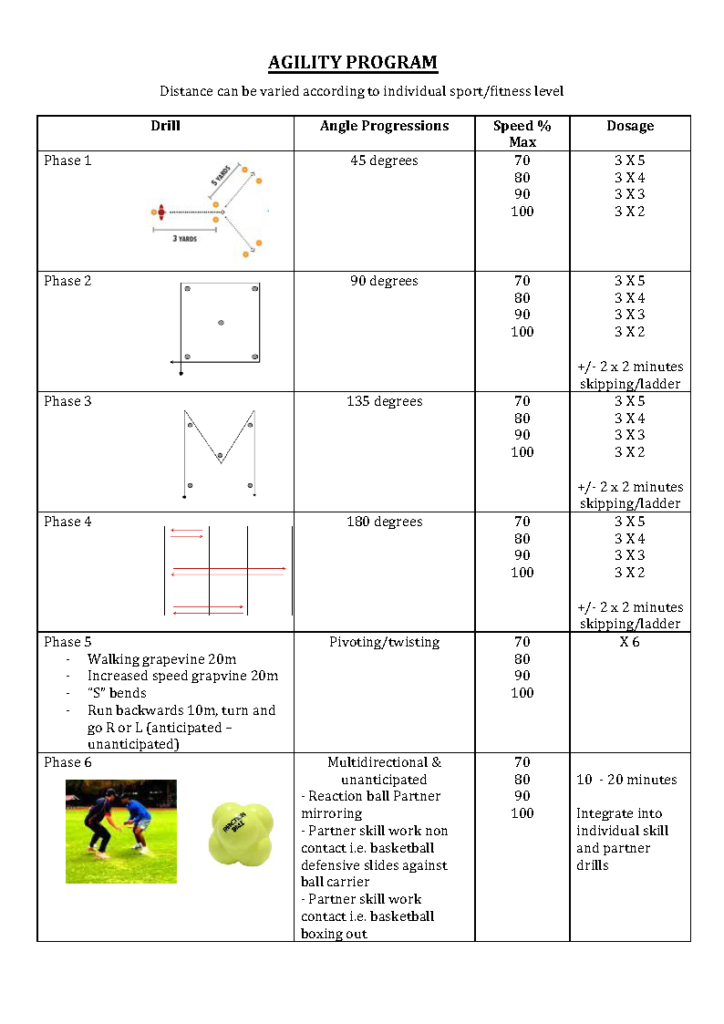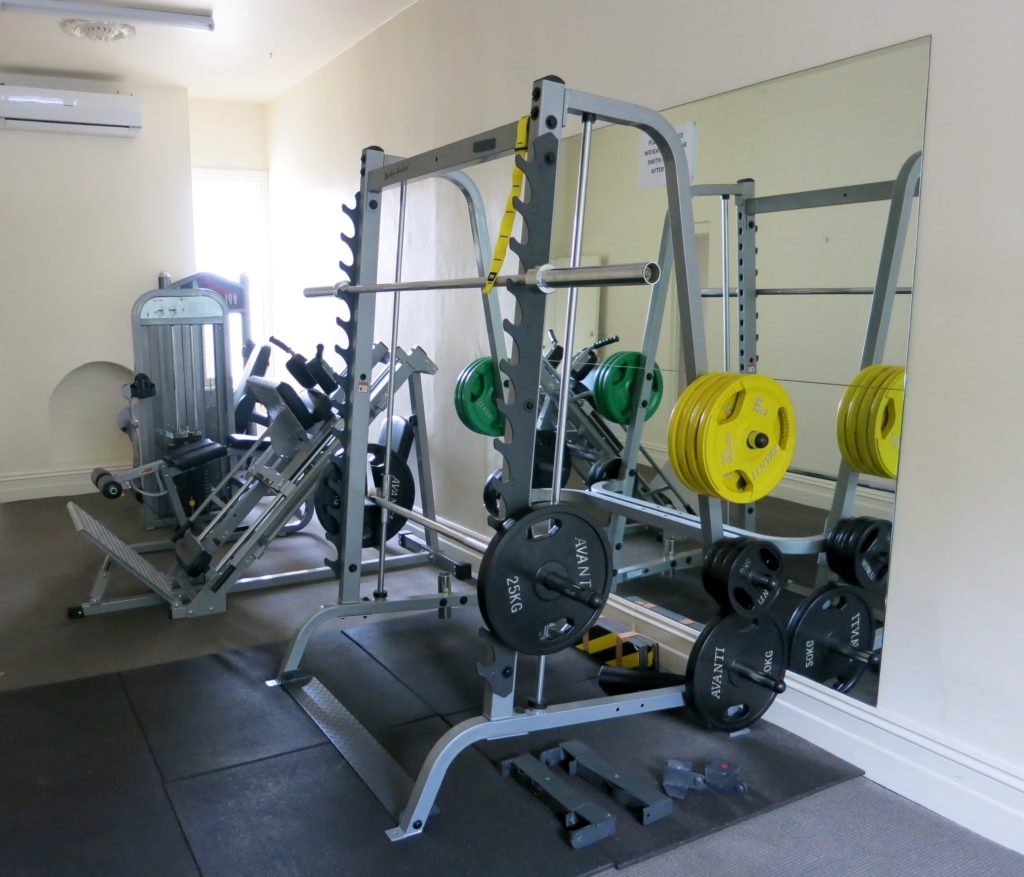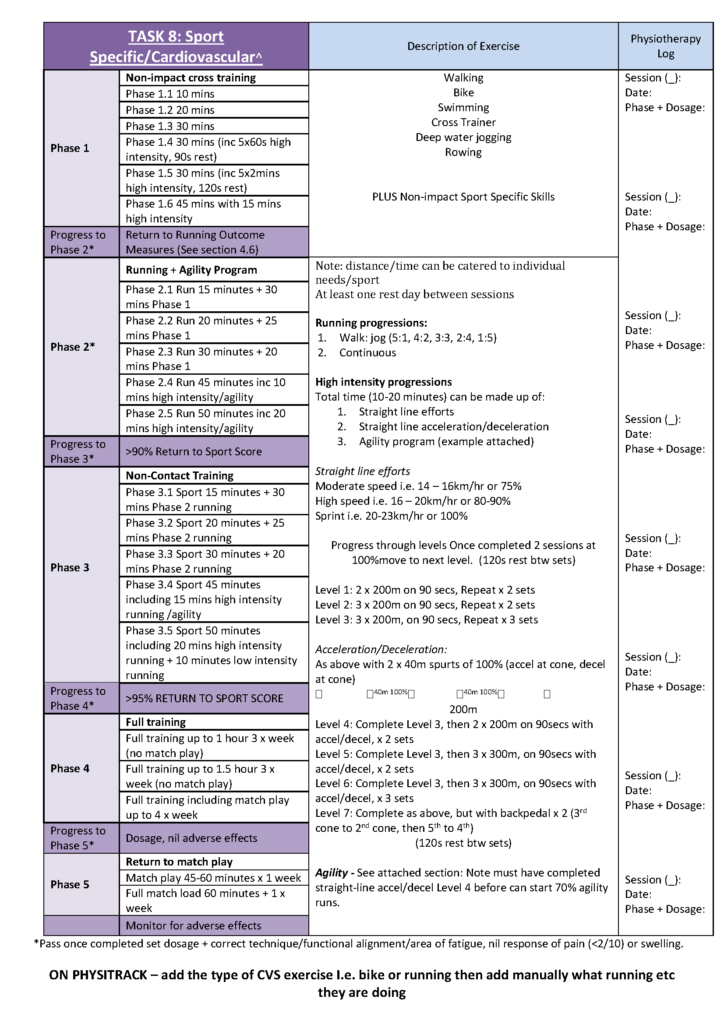Why was program developed?
Even after a period of rehabilitation 12-months after ACLR, many patients have strength and functional deficits, which have been linked to future reinjury risk, and early osteoarthritis progression. Therefore, an ongoing physiotherapy-guided exercise-therapy program was developed to target common lower-limb deficits for individuals 1-year after ACLR.
How was the program developed?
The lower-limb focussed exercise-therapy program was developed based on the best available evidence, and consensus of a group of experienced clinician researchers in the ACL and musculoskeletal field.
What did the program involve?
Patients attended 8 face-to-face physiotherapy sessions of 30 minutes duration. Physiotherapists used the treatment sessions to prescribe and progress their unsupervised exercise-therapy program, to be completed a minimum 3 times per week.
Exercise-therapy program
Standardised but individualised: The purpose of this exercise-therapy program was to provide a framework, not a recipe, of the various target areas most important to recovery in this population. Each of the eight target areas has at least 3 phases of difficulty to allow for individualisation. Patients can be on different phases of difficulty for each target area.
Exercises were prescribed according to resistance training principles related to muscular strength and power and difficulty progressed so that participants were reaching fatigue (i.e., could not physically perform 2 more repetitions).
Click here to download the full manual that was provided to the treating physiotherapists in the trial, which also includes guidelines on return to running and sport.
Click on each of the target areas below to view videos of the exercises
Walking drills
Introduction to impact
Jumping progressions
Hopping progressions
Introduction to mediolateral movement
Mediolateral movement progressions
Introduction to cutting
Agility program

Phase 1 – Wall sit (3 sets of 60 sec)
Phase 2 – Free squats (3 sets of 10-12 repetitions)
Double leg progressions
Single leg rise progressions (perform each side)
Single leg squat progressions (perform each side)
Phase 3 – Power squats (3-5 sets of 5-10 repetitions)
i) Squats as per Phase 2 but performed with maximum weight can lift 5 to 8 repetitions, at maximum speed on concentric action/way up.
ii) Squat jump with weight – reduced weight but add a jump or hop with the bar/dumbells.
Phase 1 – Single Leg Balance (3 sets of 30 secs each side)
Phase 2 – Single Leg Balance Uneven Surface (3 sets of 30 secs each side)
Phase 3 – Balance and Reach (3 sets of 10 each side)
Phase 4 – Advanced Balance specific to patient (3 sets of 30 secs each side)
Phase 1 – Side-lying hip abduction with theraband (3 sets of 10 to 12 repetitions)
Phase 2 – Standing hip abduction with theraband (3 sets of 10 to 12 repetitions)
Phase 3 – Standing hip abduction with cable (3 sets of 8 to 10 repetitions)
Phase 1 Bilateral Calf Raise (3 sets of 30 repetitions)
(bent or straight knee as appropriate for patient’s needs)
Phase 2 Single Leg Calf Raise (3 sets of 15 to 30 repetitions)
(bent or straight knee as appropriate for patient’s needs)
Phase 3 Single Leg Calf Raise off a step (3 sets of 15 to 30 repetitions)
(bent or straight knee as appropriate for patient’s needs)
Phase 3 Single Leg Calf Raise off a step with load (3 sets of 10 to 12 repetitions)
(bent or straight knee as appropriate for patient’s needs)
Phase 1 Bench Plank (3 sets of 30 secs)
Phase 2 Plank Series (3 sets of 30 secs)
Elbow Plank
Push up plank
Push up plank + foot lift
Phase 3 Side Plank (3 sets of 30 secs)
Phase 4 Rotational core (3 sets of 12 repetitions)
Phase 1 Double leg bridge (3 sets of 15 repetitions + 20 sec hold)
Phase 2 Single leg bridge (3 sets of 15 repetitions)
Phase 3 Hamstring bridges (3 sets of 10 to 12 repetitions)
Phase 4 Hamstring ball curls (3 sets of 10 to 12 repetitions)
Phase 5 Nordic hamstring curls (3 sets of 4 to 6 repetitions)

